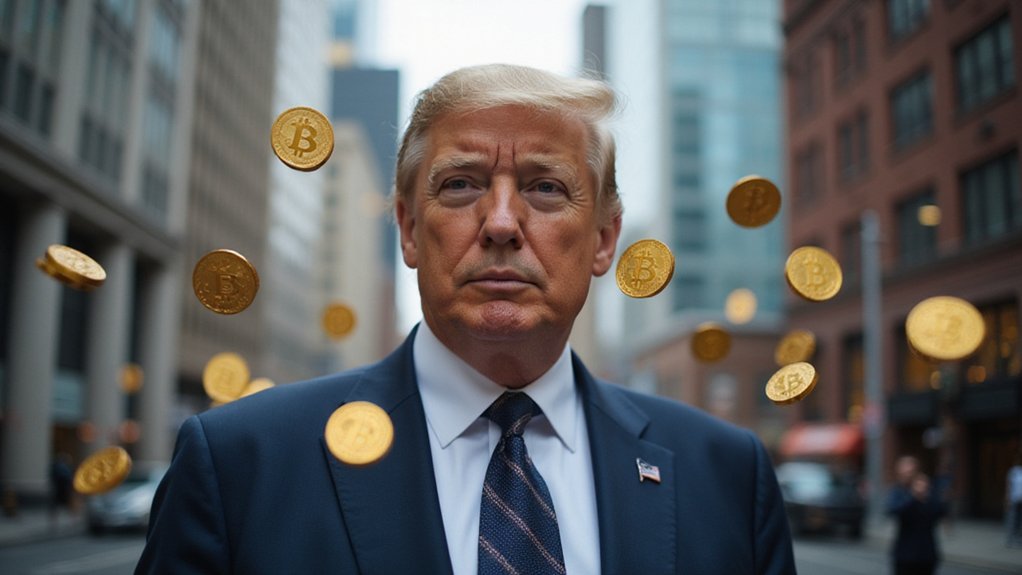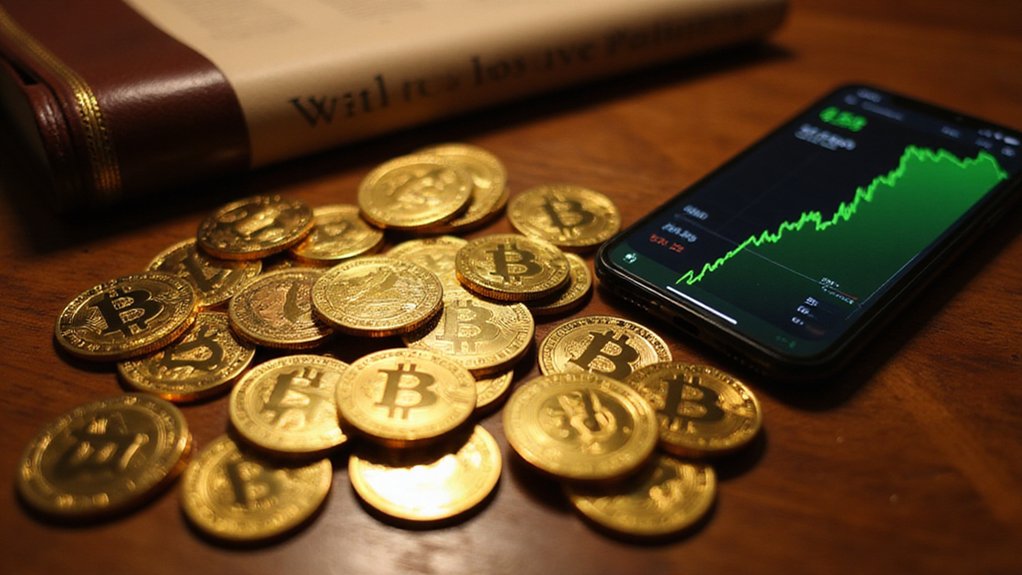While Bitcoin‘s evangelists have long proclaimed it the ultimate hedge against monetary debasement, the cryptocurrency’s relationship with inflation proves considerably more nuanced than the breathless proclamations suggest. The correlation coefficient between Bitcoin and consumer price index changes hovers around 0.27 over five years—hardly the ironclad inverse relationship one might expect from digital gold’s most fervent disciples.
The curious reality is that Bitcoin responds more vigorously to anticipated inflation rather than the actual monetary erosion occurring in grocery stores and gas stations. This distinction between expectation and reality became painfully apparent in 2021, when Bitcoin tumbled over 35% despite CPI surging toward 9%. Such decoupling suggests that market psychology, not monetary mechanics, drives much of cryptocurrency’s supposed inflation-hedging properties.
Jerome Powell’s Federal Reserve finds itself maneuvering increasingly treacherous waters, with persistent inflation above the 2% target despite aggressive monetary tightening since 2021. The central bank’s hawkish stance, complicated by geopolitical tensions and trade policy uncertainties, creates an environment where traditional economic relationships strain under unprecedented pressures.
The Fed navigates treacherous waters as inflation persists above target despite aggressive tightening, straining traditional economic relationships under unprecedented pressures.
Bitcoin’s price rallies correlate partly with these inflation risks and expectations of prolonged monetary restriction—a peculiar phenomenon where uncertainty breeds speculative appetite. The final Bitcoin is expected to be issued around 2140, with over 94% already mined by mid-2025, reinforcing the scarcity dynamics that fuel these speculative movements.
Institutional adoption has fundamentally altered cryptocurrency’s market dynamics, with BlackRock’s IBIT ETF attracting over $54.9 billion in inflows and contributing to Bitcoin’s volatility compression around 32%. This maturation process, coupled with regulatory clarity through measures like the CLARITY Act, has transformed Bitcoin from fringe speculation into legitimate portfolio diversification. Major fund allocators, including sovereign wealth funds and pension plans, continue adding Bitcoin to their portfolios as they seek new types of inflation-protected securities for diversification.
The mathematical elegance of Bitcoin’s halving mechanism—reducing inflation from an initial 25% to approximately 0.8% in 2025—stands in stark contrast to persistent global inflationary pressures. While the Fed grapples with supply shocks and geopolitical disruptions, Bitcoin’s algorithmic monetary policy operates with Swiss-watch precision, indifferent to political machinations or economic exigencies.
Powell’s vision for monetary stability faces headwinds from trade tariffs and policy shifts that threaten renewed inflationary spirals. In this environment, Bitcoin’s appeal as an alternative asset class grows not from its proven inflation-hedging capabilities, but from its promise of monetary independence—a digital sanctuary from the increasingly complex dance between central bank policy and economic reality. Despite persistent challenges, institutional adoption metrics predict Bitcoin’s user base nearing 400 million by 2025, signaling mainstream acceptance continues to accelerate.








